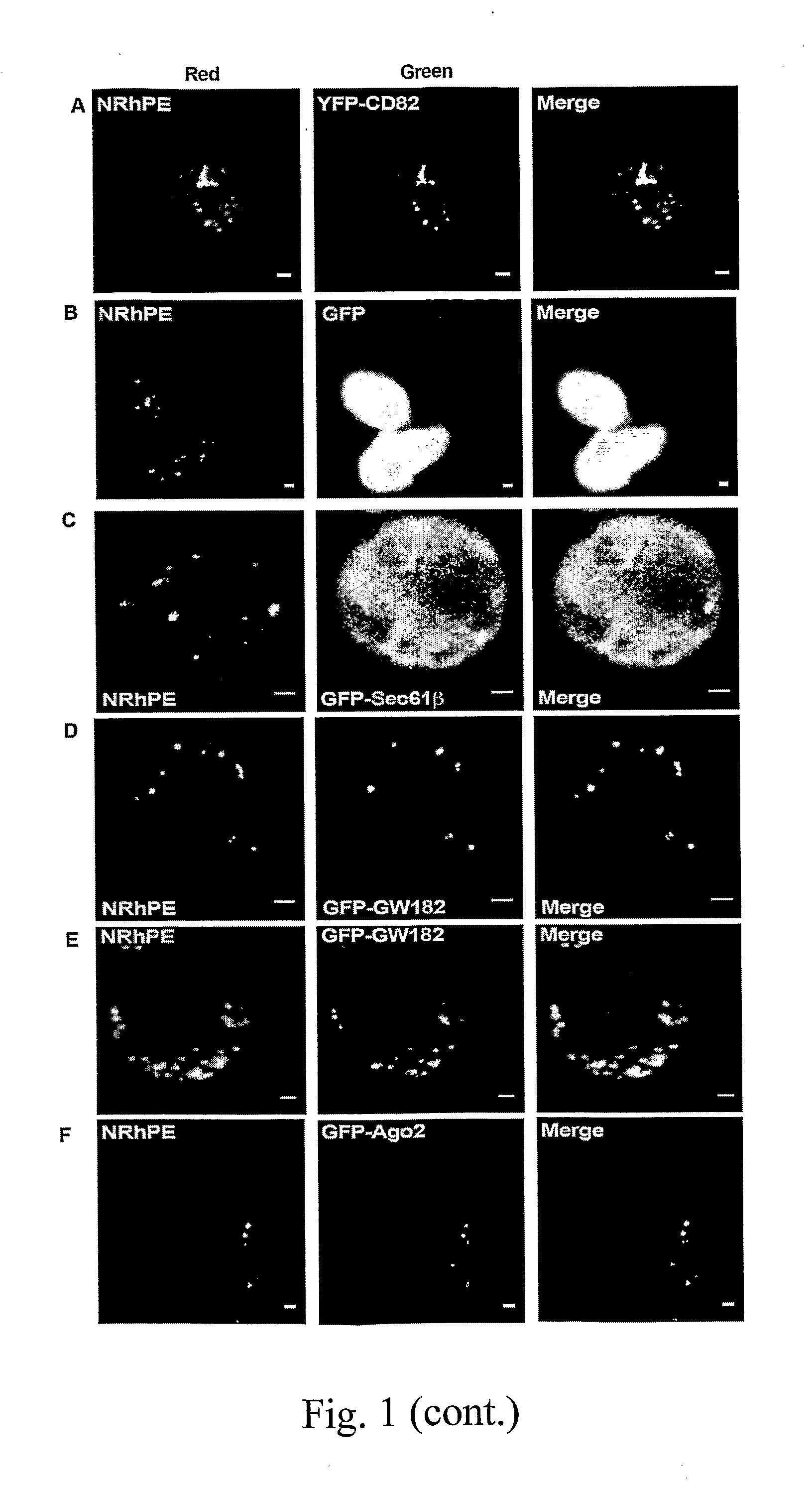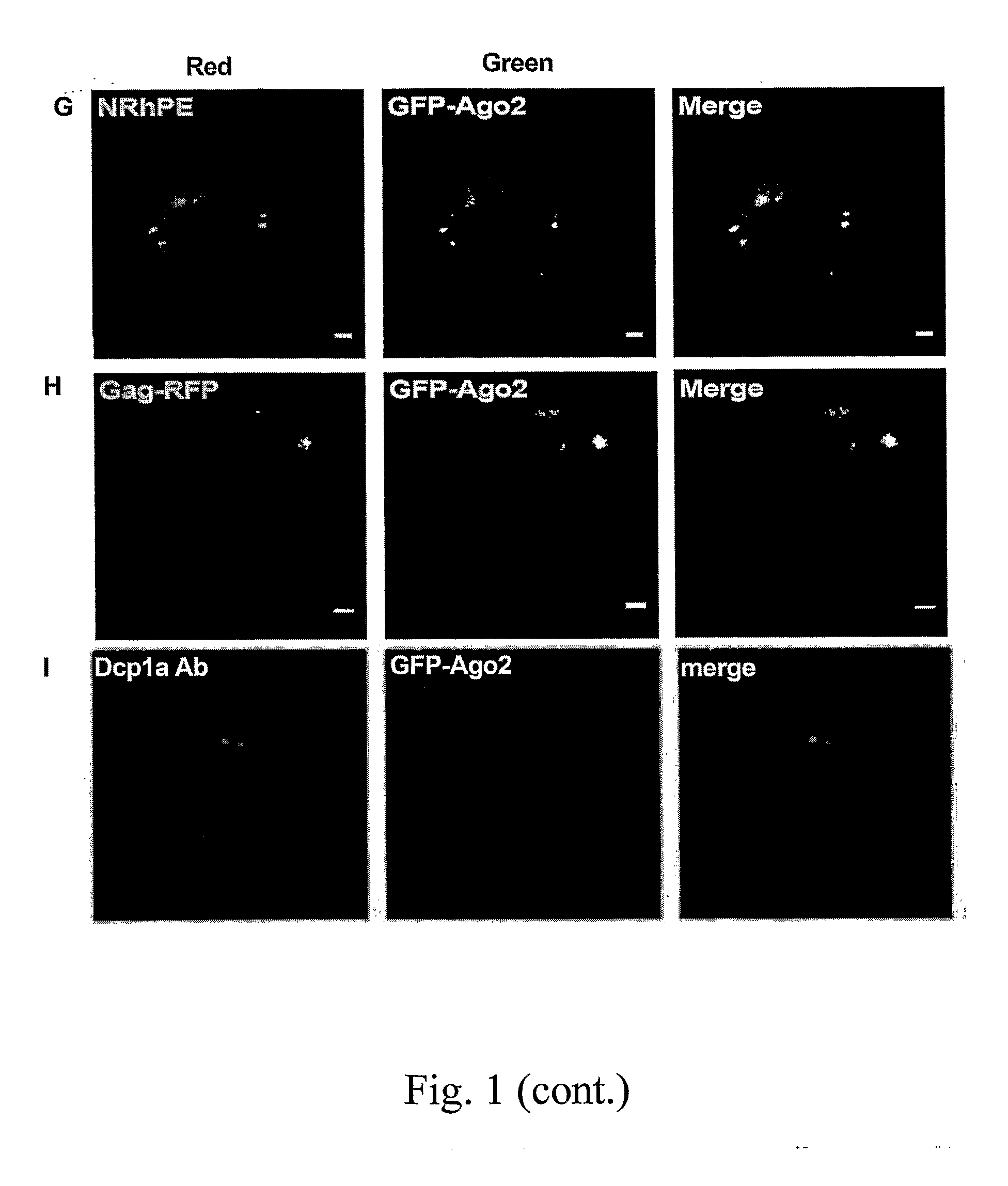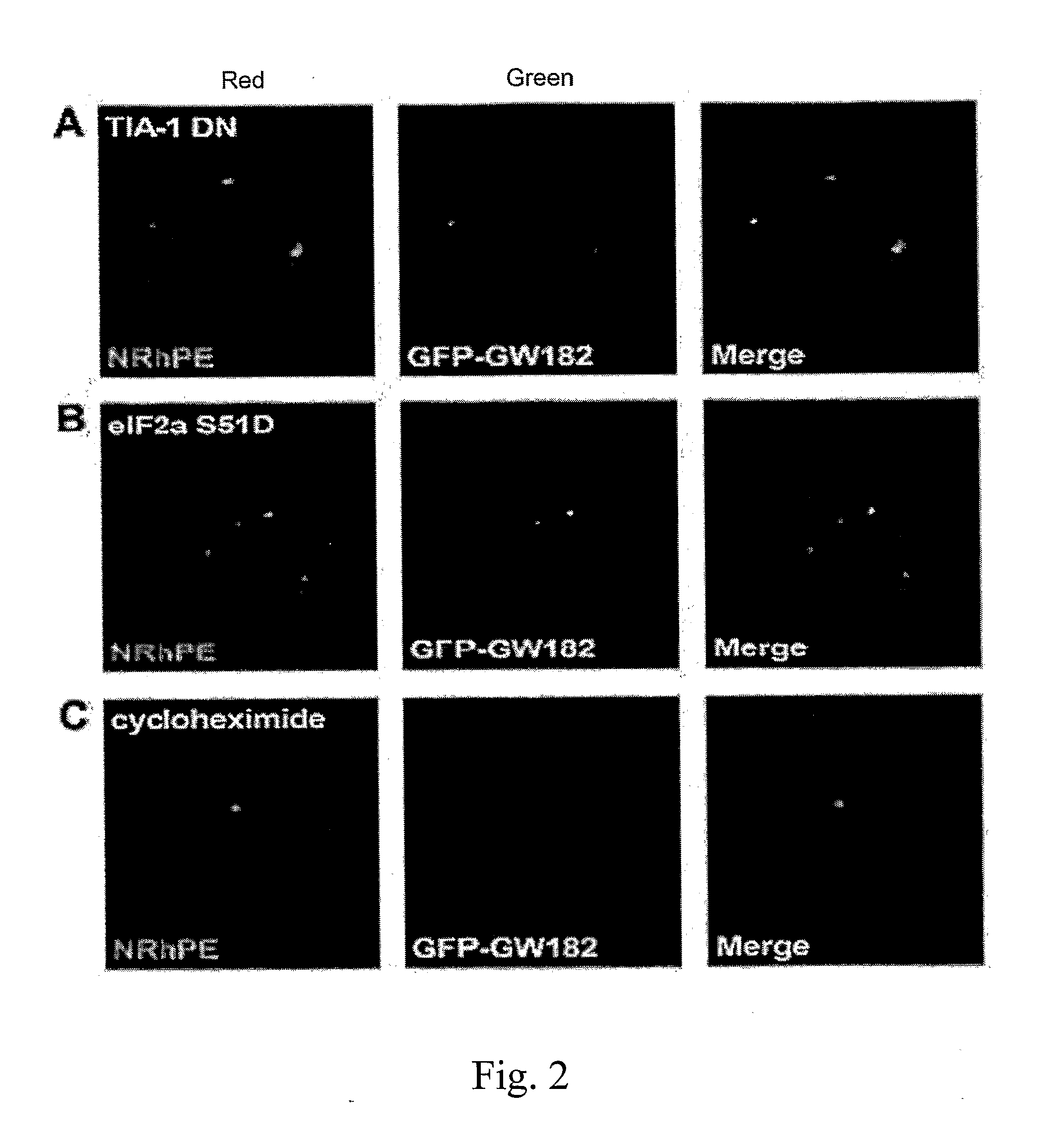Use of endo-lysosomal system and secreted vesicles (exosome-like) in treatments and diagnostics based on small RNA and experimental study of small RNA
a technology of endolysosomal system and secreted vesicles, which is applied in the direction of dna/rna fragmentation, drug composition, metabolic disorders, etc., can solve the problems of not being able to eliminate pathogens, not being able to effectively inhibit protein production with sirna or mirna, and not being able to achieve effective inhibition of protein production by sirna or mirna, etc., to achieve the effect of reducing
- Summary
- Abstract
- Description
- Claims
- Application Information
AI Technical Summary
Benefits of technology
Problems solved by technology
Method used
Image
Examples
example 1
Delivery of Active siRNA and miRNA to Cells
Materials and Methods
[0182]Antibodies
[0183]Antibodies were obtained as follows: Rabbit and mouse Immunoglobuline G (Sigma-Aldrich, St. Quentin Fallavier, France), anti-mono and poly-ubiquitinated proteins clone FK2 [Tebu-bio, Le Perray en Yvelines, France], anti-Dcp1a rabbit polyclonal (a kind gift of J. Lykke-Andersen, University of Colorado), anti-GW182 (serum 18033), anti-Ge-1 (serum 106), and normal human serum (kind gifts of M. Fritzler, University of Calgary).
[0184]Cell Culture
[0185]The Mono-Mac6 cell line (DSMZ, Braunschweig, Germany ACC-124) was cultured in RPMI 1640 (Roswell Park Memorial Institute 1640 buffer) containing 10% FBS (Phosphate buffered saline), non-essential amino acids (Invitrogen, Paris, France), and OPI (oxaloacetate, pyruvate, and bovine insulin) media supplement (Sigma-Aldrich).
[0186]Enrichment of Exosomes
[0187]Cells were grown at a density of 0.5-1.0×106 cells / mL for 8 to 24 h. Cells were centrifuged at 400 g fo...
example 2
Sorting of GW182 into Multivesicular Bodies Controls MicroRNA Activity
Material and Methods
[0240]Exosome Purification
[0241]Exosomes were purified by differential centrifugation as previously described (Raposo, G. et al. B lymphocytes secrete antigen-presenting vesicles. J Exp Med 183, 1161-72 (1996) [82]).
[0242]Confocal Microscopy
[0243]Images were captured with a Zeiss LSM 510 confocal microscope with 488 nm and 561 nm lasers and a 63× objective lens. Filters used were 500-530 nm (GFP) and 550-650 nm (N-Rh-PE, RFP).
[0244]Dynamic Light Scattering
[0245]Purified exosomes resuspended in DPBS (Invitrogen) were analyzed with a Zetasizer Nano S from Malvern Instruments (Malvern, UK) in 40 microL quartz cuvettes. Five measurements were performed in automatic mode after equilibration for 2 min at 20° C. Experimental data were processed with manufacturer's software in multiple narrow modes assuming spherical particles. Corrections for solvent refractive index (1.332) and viscosity (1.029) were...
example 3
Method for Determining the Delivery Rates and / or Efficiency of a siRNA, miRNA or Related Molecule to Target Organs or Cells
[0272]A first step of collection of serum, supernatant or body fluid from site draining tissue or cells targeted by siRNA or miRNA (e.g. urine sample for prostrate or kidney targeted siRNA) is realized, approximately 12 h to 4 days after treatment of animal or patient with siRNA / miRNA or inhibitor thereof.
[0273]Then the removal of cellular and other large material by low-speed centrifugation, at 100-400 g for 5 minutes is performed. Supernatant is recovered.
[0274]The removal of large debris, vesicles and other particulates by a second centrifugation, for example 8000-12 000 g for 30 minutes is performed. Alternatively, this step is substituted by size-exclusion filtration using for example a 0.22 μM, 0.45 μM or up to 1 μM filter cutoff. Material passing through the filter is collected.
[0275]A final centrifugation is used to pellet small vesicles or exosomes, at ...
PUM
 Login to View More
Login to View More Abstract
Description
Claims
Application Information
 Login to View More
Login to View More - R&D
- Intellectual Property
- Life Sciences
- Materials
- Tech Scout
- Unparalleled Data Quality
- Higher Quality Content
- 60% Fewer Hallucinations
Browse by: Latest US Patents, China's latest patents, Technical Efficacy Thesaurus, Application Domain, Technology Topic, Popular Technical Reports.
© 2025 PatSnap. All rights reserved.Legal|Privacy policy|Modern Slavery Act Transparency Statement|Sitemap|About US| Contact US: help@patsnap.com



